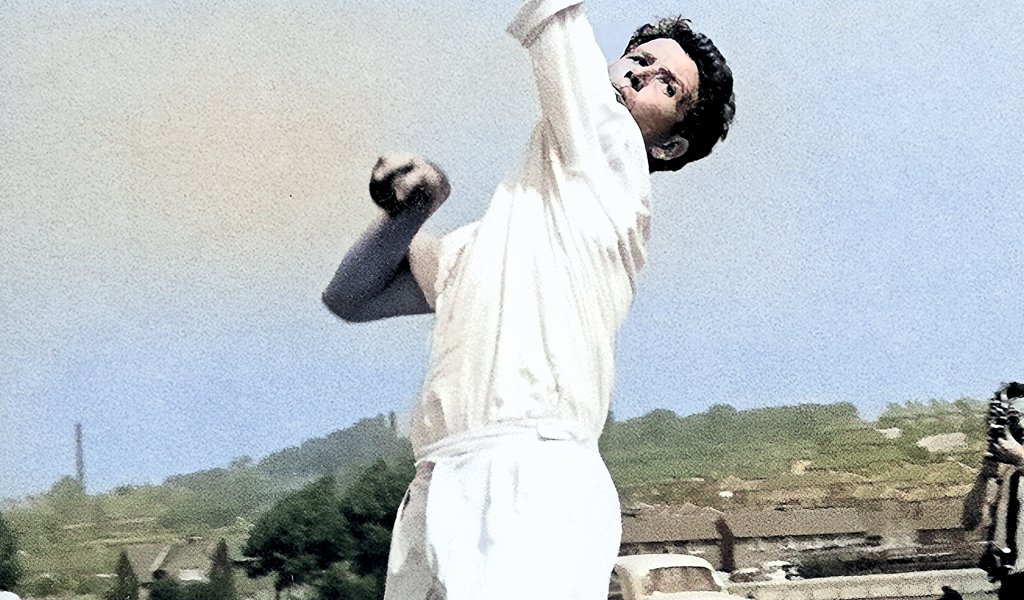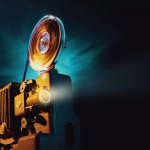John Stone takes a close look at what was not cricket’s finest hour – and how it ruined the test career of the fastest bowler in England.
CARDS on the table. I am a Derbyshire supporter of a certain age and as I was growing up the county’s quick bowler, Harold Rhodes, was a sporting hero of mine. What was there not to like? By the mid-1960s, he was comfortably the fastest bowler in England. Rhodes was among the wickets and opposition batsmen were jumping around a bit. Watching Derbyshire was suddenly exciting – especially when they were in the field. During my teenage years, I longed to see Rhodes opening the bowling for England and, as the 1965 season unfolded, I was very confident that I wouldn’t have long to wait. I would be disappointed.
Around that time, the prevalence of suspect bowling actions was threatening to destroy the good name of the cricket. The ‘throwing’ controversy was at its peak – not just in England, but in Australia, South Africa and the West Indies. Illegal bowling actions were infecting the game. The Australians had taken very decisive action in 1963 when the left-arm ‘chucker’, Ian Meckiff, had been summarily thrown out of the sport.
In England the then governing body, the MCC, were under increasing pressure to take a similar stand. Harold Rhodes was the man they chose to make an example of. What followed was not only cruel, it turned out to be just plain wrong. Several years later, his best years and his international prospects now behind him, the MCC finally ruled that Rhodes’s bowling action had been fair all along. Suffice to say: this was not cricket’s finest hour.
It all began promisingly enough for Rhodes. England had been thumped four-nil down under in the 1958/59 Ashes series and, in the immediate aftermath, the selectors were looking for new faces. The 22-year-old Derbyshire fast bowler, Harold Rhodes, had impressed with his classical sideways on action and his agreeable tendency to get close to the stumps in his delivery stride. He was duly chosen for the third and fourth tests in the 1959 home series against India and made a favourable impression. Injury saw him omitted from the final match of the series and he spent that winter toughening up his physique by chopping wood on the Duke of Devonshire’s estate at Chatsworth.
When the South African tourists turned up at Derby in May 1960 all eyes were on their opening bowler, Geoff Griffin, who had already fallen foul of umpires back home. Griffin would be no-balled out of cricket later that summer but at Derby he sent down 29 overs without incident. Instead it was Harold Rhodes who came under the spotlight when he was no-balled by square leg umpire Paul Gibb.
Mr Gibb was at pains to point out that he was not absolutely certain that Rhodes threw but that there was ‘something different’ about his bowling action and that, consequently, he was entitled to ‘call’ him for no-balling. It was true, there WAS something different about his action. Rhodes would be filmed umpteen times over the next few years – on one famous occasion, wearing a splint on his arm. Fairly early on in the saga, a surgeon from the Derby Royal Infirmary, George Cochrane, arranged for Rhodes’s bowling arm to be X-rayed. This indicated that his elbow hyper-extended beyond 180 degrees. Film taken would ultimately prove that the hyper extension did not straighten at the point of delivery – but at high speed there was an illusion of straightening and consequently there was the illusion of a throw – nothing more than that. Unfortunately it would take eight years of scrutiny by umpires, photos, films, X-rays and medical evidence as well as never-ending trips to Lords by Rhodes before the penny finally dropped and his action was passed as fair. 1960 was just the start of the nightmare.
Rhodes enjoyed a successful season in 1961 with in excess of 100 county wickets to his name. But after being no-balled again by Paul Gibb that summer, he was confined to the wilderness as far as test selection was concerned. Rhodes would miss half of the 1962 season through injury and his form fell away somewhat during 1963 and 1964. But as the 1965 season got underway, Rhodes hit the ground running, content now that he had passed muster with every single umpire he had encountered for almost four years. He suddenly hit top form and would ultimately top the national bowling averages for the 1965 season with 119 wickets at 11.04 runs each. Meanwhile Derbyshire met Middlesex in a Gillette Cup encounter at Lords and, perhaps as a consequence of the increasing clamour for his inclusion in the England squad, yet another film was made of Rhodes’s bowling. When he was shown this particular footage, Rhodes had to agree that his action appeared suspect. Quite by chance, however, Rhodes recalled seeing film of the great Harold Larwood taken from the same angle and from that particular vantage point Larwood’s bowling action, which was generally agreed to be beyond reproach, appeared similarly questionable. With this in mind Rhodes suggested that a film be taken of Fred Trueman from the same angle. And despite having what most people considered to be a perfect bowling action, from the viewpoint chosen ‘Fred looked even worse than I did’, Rhodes commented. But it was too late. It was not clear whether umpire Syd Buller was shown the footage of Rhodes bowling at Lords or whether he was told about its existence. Either way the damage was done. Buller no-balled Rhodes from square leg in Derbyshire’s match against South Africa at Queens Park, Chesterfield, in June 1965. Mr Buller had never taken issue with Rhodes’s bowling on previous occasions but, almost unbelievably, he now advised the Derbyshire captain that, in his opinion, Rhodes was throwing every ball. Rhodes’s high hopes of imminent test selection were in tatters. The Queens Park crowd were far from happy with the proceedings and Mr Buller famously required a police escort as he left the field that afternoon.
Harold Rhodes himself and many others in Derbyshire believe that Syd Buller was recruited specifically to ‘call’ him that day in order to demonstrate that the MCC, like their counterparts in Australia, were determined to take decisive action against the scourge of throwing. Jack Crapp, Buller’s umpiring colleague at Chesterfield for that match, had indicated earlier in the day that he didn’t want any part of what was about to happen.
Some years later, Syd Buller’s widow told Rhodes: “Syd was led to believe that what he did at Chesterfield was in the best interests of cricket. He later realised that what he had done was a tragic mistake and he regretted the hurt he had inflicted on you and your family.”
At one point, Rhodes’s wife wrote in desperation to the MCC describing the anguish of a mother of two young children who sees her husband’s chosen profession turning its back on him and the family’s security under threat as a result. But Lords would not be rushed into a final decision and the nightmare would continue for three further years.
To his eternal credit, Harold Rhodes continued to run in hard and take wickets for Derbyshire – still dreaming that one day he might be recalled to the England test team. How cruel then that by the time his bowling action was finally declared fair in 1968, his peak playing days were behind him. They drank champagne at Rhodes’s home to celebrate the good news that evening but it was left to his father, himself a former first class player and umpire, to introduce a touch of reality into the proceedings: “I hate to say this, Harold. They’ll never pick you again. They’re not big enough, lad”. He was right.
Harold Rhodes was on trial for fully eight years. But in the final analysis it was the game of cricket in the dock. His playing days over, Rhodes could have been forgiven for turning his back on the game which had treated him so badly. Quite the reverse, he continued to give back to the game he loved – umpiring and coaching as opportunities arose. I believe Harold Rhodes, who at the time of writing is still going strong at the age of 88, deserves our admiration. He certainly has mine.






